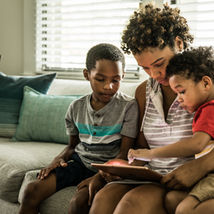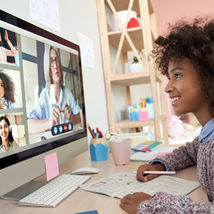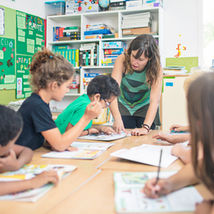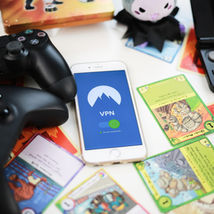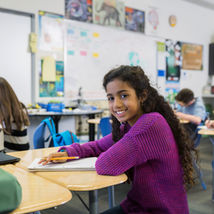Mindfulness in the Digital Age: Empowering Parents to Raise Tech-Responsible Children

Our children are now living in a world where daily tech use and engagement online are normal. Recent research from Statista revealed that 62% of American children watched TV every day, while 30% surfed the internet daily.
Although tech tools can be beneficial for children, helping them grow their skills and personhood, they can just as easily be misused.
For instance, your child could start to use social media for hours a day and it could begin to affect their ability to get anything else done. Or, the more they game, the more inappropriate behavior like trash-talking might persist.
Thankfully, your child can have a more mindful and responsible relationship with technology with your help. Use these strategies to guide your child to healthy digital habits.
Get Familiar With the Tech Your Child Uses
You’ll worry a lot less about what your child is doing online and with their devices if you familiarize yourself with what they're doing and using.
Make a list of all the devices and platforms your child uses and get more comfortable with them. For example, let’s say your child has a smartphone. Get the same one and study all of its features and functions, such as internet access, call-blocking, and default apps.
Or, let’s say your child uses social media. Make a profile on each of the platforms your child is on. Understand how the algorithms work so that you can ensure your child only gets appropriate content in their feed. Explore privacy controls, how friending works, and how to filter messages and comments.
When you get familiar with the tech your child uses, not only will it ease your anxieties about what they’re doing and using, but it will also empower you to teach your child how to use these platforms and tools more mindfully.
Find a Balance Between Time Online and Offline
Your child will easily become consumed with technology if they don’t have a life offline. It’s integral they find other interests and spend just as much, if not more time, engaging in these activities. A balance between time online and offline is critical to establishing healthy digital habits.
Start with a push for more time outdoors. Being in nature gets your child away from technology and into a setting that can positively impact their holistic health. They’re engaging in nature therapy without even knowing it, which is the intentional use of nature to improve mental, physical, and emotional health through activities like gardening and hiking.
Connecting with nature through these activities can reduce stress and symptoms of various mental health conditions, like anxiety, depression, and post-traumatic stress disorder (PTSD). In addition, your child can meet other kids outdoors and develop meaningful relationships that lead to a fuller life offline.
Sit down with your child to chat about what they like to do. Ask them about their current interests and what they want to try. Then, schedule these activities throughout the week, if not daily.
If you have a young child who can’t articulate their interests yet, try a bunch of different activities and observe how they take to them.
Help your child identify their other interests and incorporate them into their daily life to achieve that balance between time online and offline.
Teach Your Child Other Coping Mechanisms
Often, children use technology to cope with what’s going on in their lives much like adults do.
For example, if your child is feeling sad, they may watch videos on YouTube to make them happy. They might post on social media for an instant self-esteem boost after receiving criticism. Or, a teen might text all day instead of engaging in face-to-face conversations to relieve social anxiety.
The last thing you want is for your child to run to their tech tools and online platforms every time they’re going through something. This is one way to incite an addiction to technology that becomes harmful to your child’s quality of life.
Teach your child healthy coping mechanisms they can use in place of jumping on their phones or laptops. For instance, meditation can be influential in helping your child better regulate their emotions.
Meditation can help calm your child. It can help boost their mood when they’re feeling negative emotions like anger. It can also help them become more self-aware and able to identify how they’re feeling in certain circumstances, like after they’ve spent time online.
Explore different kinds of mindfulness meditation until you find the types your child benefits from the most. The following coping mechanisms are also worth teaching your child:
Yoga
Stretching
Working out
Talking it out
Breathing exercises
Creative expression like painting
Your child will be more likely to develop a healthy relationship with technology when they aren’t relying on it as their only coping mechanism.
Observe Your Child’s Interactions With Technology
It takes time for your child to become completely mindful of how they use technology. Especially if you leave it entirely up to them to identify how often they use devices and what happens when they use them.
You can be a big help in this regard by observing your child’s interactions with technology. How often are they glued to a screen? How long are their tech sessions? What’s their behavior like before they start engaging online and after?
If your child is old enough to understand and have such a conversation, you can sit down with them and discuss what you’ve observed about their tech use. You can then work together to develop a healthier digital routine.
For example, you can implement an “unplug” time for the whole family after expressing your concerns about how your child uses their phone up until bedtime.
Because our world is so digitally-focused these days, it’s difficult to establish healthy tech habits ourselves, let alone for our children. But we must focus on raising tech-responsible kids to ensure their mental, physical, and emotional health isn’t harmed by what’s happening online and on their devices.


